- A new 7 Series generation debuts, with a massively improved interior
- Impressive material choices and tech features
- No longer feels like a merely nicer 5 Series
Driven: The 2023 BMW 7 Series Might Make You Cancel That S-Class Order
The redesigned 7 Series features tons of in-car tech, enhanced driver aids and more efficient powertrains
What is the 7 Series?
As of late, BMW's been making its biggest waves with performance-focused M or electrified i models, but it hasn't forgotten about its core products. The 2023 BMW 7 Series sedan has been redesigned from the ground up with new styling both inside and out. The infotainment and navigation system has been redesigned, and the 7 is now available with BMW's hands-free highway driving assist. There are some significant changes under the hood, too, as both the six- and eight-cylinder engines are now mild hybrids. Pour one out for the V12, but a plug-in hybrid is coming in 2023. Oh, and BMW's releasing an all-electric variant, though we review that car, the BMW i7, separately.
We had an opportunity to get behind the wheel of both the 7 Series and i7, and it's both iterative and a departure from what came before. But given the success of the recently redesigned Mercedes-Benz S-Class, changes were in store.
What's under the 7 Series' hood?
The 2023 7 Series will be available with two powertrains when it launches at the end of this year. A third powertrain — a plug-in hybrid — is coming sometime in 2023. The 740i is driven by a turbocharged 3.0-liter inline-six and is paired to a 48-volt mild hybrid system for decreased fuel consumption. Total output to the rear wheels is listed at 375 horsepower and 383 lb-ft of torque. BMW says the 740i can accelerate from zero to 60 mph in 5.0 seconds. The 760i xDrive swaps the turbo inline-six for a turbocharged V8. All-wheel drive is included, too, all the better for managing the V8's 536 horsepower and 553 lb-ft of torque. Both engines are paired with a new eight-speed automatic transmission that houses a 48-volt mild hybrid system.
A fully electric 7 Series variant will debut with this generation. BMW calls it the i7, and it is reviewed separately.
How does the 7 Series drive?
The 7 Series has long been one of the better-driving sedans in its class, with generally sportier driving dynamics than cars like the Mercedes-Benz S-Class, Audi A8, Lexus LS and Genesis G90. We only had an opportunity to sample the V8-powered model, but it certainly still has some of that sport sedan feel.
The new 7 Series is a big car, but it does a decent job of hiding its size and weight. The engine is smooth and strong, and the exhaust note is beefy without being obnoxious. There's more than enough power for day-to-day driving, so passing or merging takes little effort. If you do need to downshift, the new eight-speed auto is quick and responsive, and the built-in 48-volt mild hybrid system smooths out shifts and improves the engine auto stop-start feature.
While there are notable exceptions, modern BMWs don't offer the level of steering feedback you'll find in their predecessors. The steering is quick, but unless you've got it in Sport mode, it's a bit light and lifeless. Switching to Sport adds heft to the steering, so the car feels a little more direct, but there's still some disconnect. Sport mode also sharpens the suspension, improves throttle response and quickens shifts. In other modes, the steering is light, and the rear-axle steering (standard on the 760i xDrive and optional on the 740i) tightens the turning circle to make the car easier to park.
How comfortable is the 7 Series?
Executive sedans like the 7 Series have to be as comfortable to ride in as they are good to drive. Every 7 Series model has an adaptive air suspension. It adjusts based on road conditions and drive modes, lowering and stiffening in Sport or being more compliant in Relaxed. The ride is fairly smooth and absorbs most bumps well. It still doesn't dampen imperfections as well as the S-Class, but neither the driver nor passengers should complain about spending time inside the 7 Series.
How's the 7 Series' interior?
The 7 Series' cabin is the most impressive we've seen in a BMW sedan yet. The interior environment combines glass, open-pore wood (we suggest staying away from the glare-inducing glossy trims) and, of course, leather that elevates the design far above any other BMW. The stainless steel elements on the doors are intricately detailed and are laid on top of illuminated speakers.
At night, the 7 Series shows off its intricate ambient lighting elements, including the full-width backlit dashboard that BMW calls the Interaction Bar. The Interaction Bar incorporates simple climate controls in the section underneath the curved touchscreen (most are located in the touchscreen), while buttons that automatically open and close the doors are located on the far outside edges. It's slick, but it can be difficult to see in bright light. The center console houses the iDrive infotainment system controller and drive selector (both made of glass), along with a buttonless gloss black multifunction control panel.
There's more in the rear, too. While accoutrements like pillow-style headrests, position-adjustable seats and a wireless charging pad are present, they're also expected. However, the small 5.5-inch touchscreens located on the door grab handles are quite unusual. They adjust the requisite seat, in addition to controlling heating and ventilated functions, the individual climate zone, ambient lighting, audio system and the available Theater Screen entertainment display (more on that later).
In terms of passenger space, the new 7 Series is slightly longer and wider than its predecessor, and headroom is said to be improved. There's plenty of room to stretch out in either row, even for taller passengers.
How's the 7 Series' tech?
The 7 Series features some of BMW's latest in-car tech and driver aids, though much of it we've already seen on models like the BMW iX. Up front is a large curved display that houses a 12.3-inch digital instrument panel and a 14.9-inch central touchscreen — the latter loaded with BMW's newest infotainment system, dubbed iDrive 8.
The latest iteration of iDrive packs a whole new interface that controls most of the car's major functions, from navigation to climate control. BMW removed most buttons from the car's interior steering wheel included. It looks clean, but it means using the touchscreen for everything. It's responsive but occasionally cumbersome, and we used voice commands on more than one occasion because we couldn't find the button for something. The voice commands are good, but they feel like a crutch.
Audio options include a standard 18-speaker Bowers & Wilkins system or a 36-speaker surround-sound system with speakers integrated into the headrests and ceiling. Perhaps inspired by its rival at Mercedes-Benz, the 7 Series is one of the first BMWs with an augmented reality overlay for the navigation system. With a destination programmed into the nav, the front camera image will project onto the instrument cluster, complete with floating arrows that tell you where to turn. It's a neat feature that leans into the 7 Series' high-tech ethos, and it makes you want to use the built-in navigation rather than just using your phone.
That high-tech impression might best be exemplified by the new optional Theater Screen. A 31-inch widescreen display with 8K resolution unfolds from just below the panoramic sunroof to provide a wealth of entertainment options for rear passengers. It features integrated Amazon Fire TV and can stream ultra high-def content using the 7 Series' built-in 5G modem. It's impressive in person, although the screen might be a little too close for comfort for some passengers. It also doesn't fit a standard ratio, so whatever you're watching could be cut off or letterboxed. When deployed, it also makes the rear window useless, and the 7 Series bizarrely does not offer a digital rearview mirror. Get used to using those side mirrors, folks.
There are also numerous improvements to the advanced driver aids onboard. The forward collision mitigation system, for instance, can now recognize oncoming traffic and brake to avoid a collision. The Parking Assistant Professional feature that debuted on the iX also makes an appearance here, allowing drivers to teach the vehicle how to pull into or out of tricky driveways. Drivers can also enjoy semi-automated driving at higher speeds. The available Highway Assistant feature allows drivers to go hands-free at speeds up to 80 mph — twice the previous speed limit allowed by BMW. You can tap to change lanes, too, though you always have to be ready to take over. The car will monitor your face to make sure you're paying attention.
All of these features and more add up to a 7 Series with tech that has grown by leaps and bounds compared to the old model.
Edmunds says
Rather than take its predecessors' cues of looking like a slightly fancier 5 Series, the 2023 BMW 7 Series blazes its own path. It's quick and comfortable to drive. Exterior and cabin design takes a giant leap forward with this generation, though some of those leaps come at the cost of functionality.
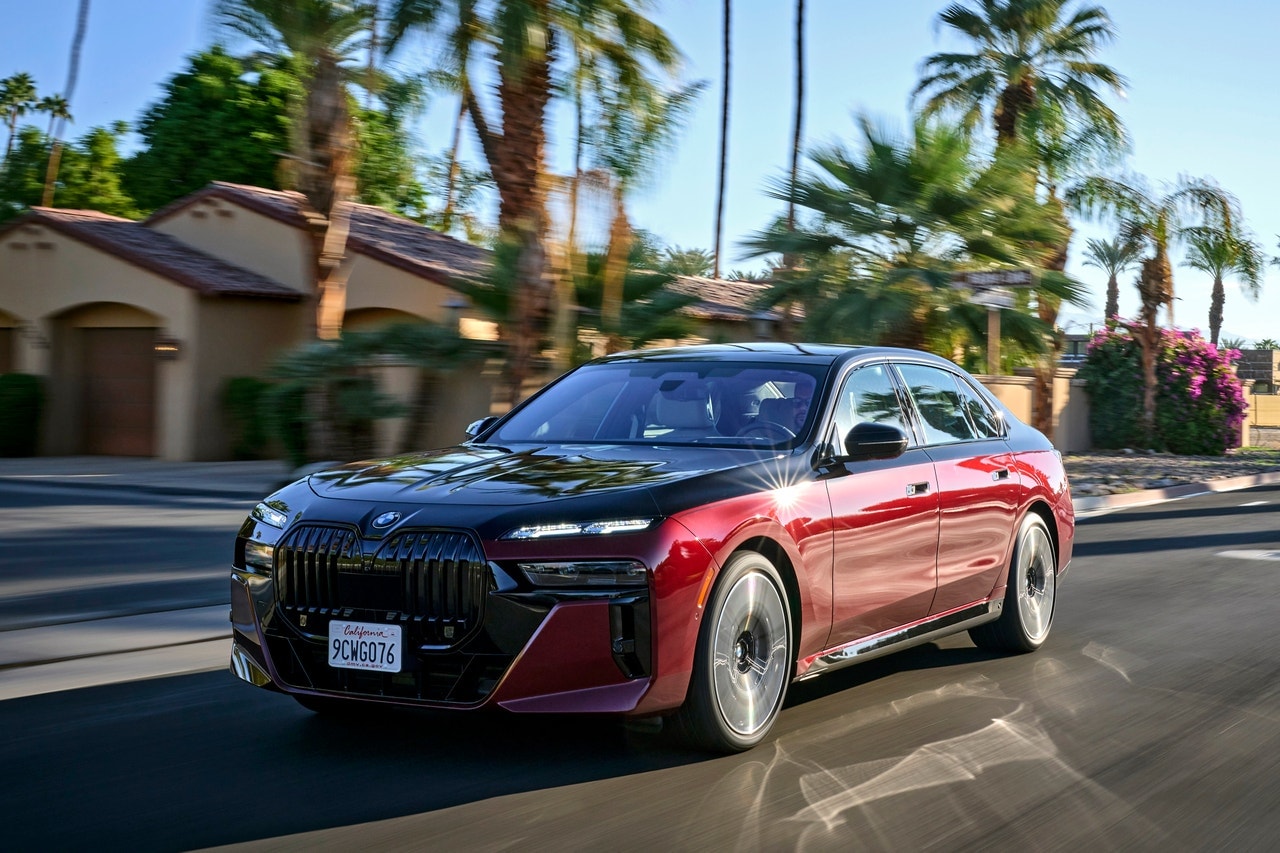




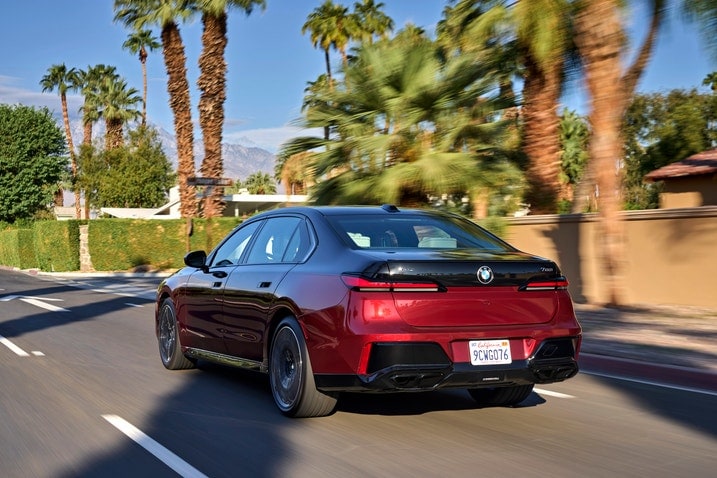

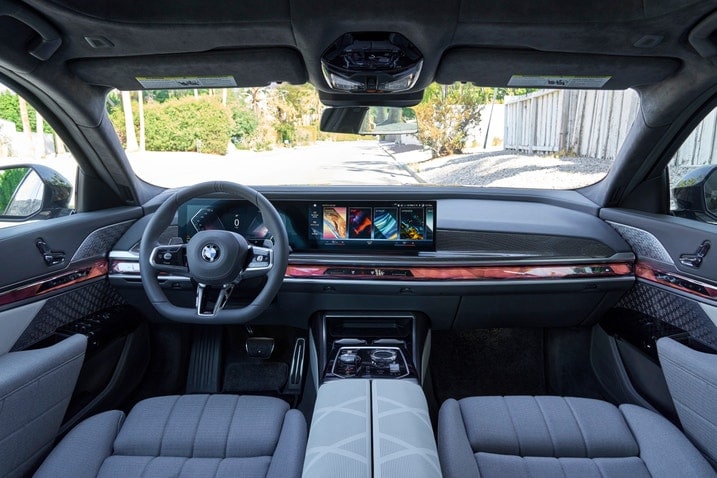
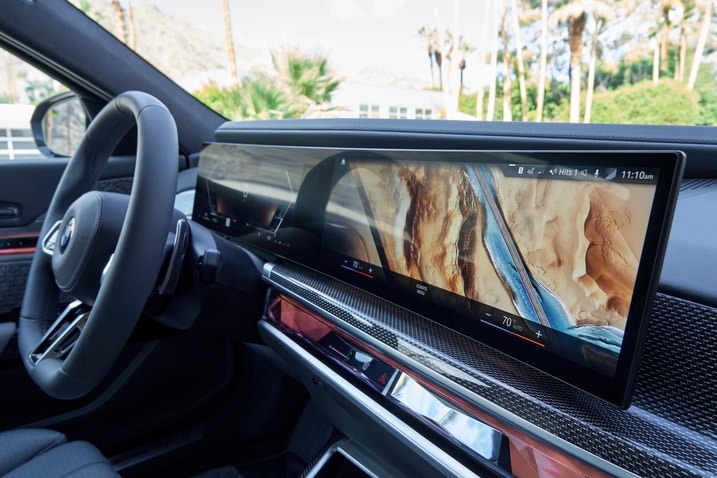
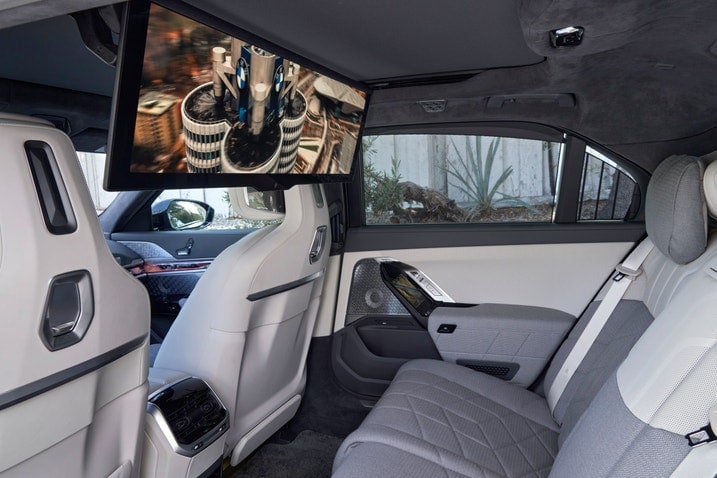

 by
by